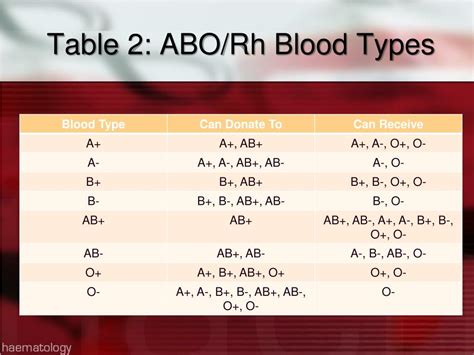The world of breakfast cereals is vast and varied, with countless options lining the shelves of grocery stores. Amidst this sea of choices, whole grain cereals stand out for their numerous health benefits and rich nutritional profile. Whole grain cereals are made from grains that include the bran, germ, and endosperm, as opposed to refined grains, which are stripped of the bran and germ during processing. This distinction is crucial, as the bran and germ are the parts of the grain that contain most of the fiber, vitamins, minerals, and antioxidants.
Historical Evolution of Whole Grain Cereals
The concept of consuming whole grains dates back thousands of years, with ancient civilizations such as the Egyptians, Greeks, and Romans valuing whole grains for their nutritional and culinary qualities. However, the processing and mass production of cereals, particularly in the 20th century, led to a shift towards more refined grains. It wasn’t until the latter part of the 20th century that there was a resurgence of interest in whole grains, driven by growing awareness of their health benefits.
nutritional benefits
Whole grain cereals offer a plethora of nutritional benefits, including: - High in Fiber: Whole grains are an excellent source of dietary fiber, which can help lower cholesterol levels, promote digestive health, and support healthy blood sugar levels. - Rich in Antioxidants and Phytochemicals: The bran and germ of whole grains contain a variety of antioxidants and phytochemicals that can help protect against chronic diseases, such as heart disease, diabetes, and certain types of cancer. - Good Source of Vitamins and Minerals: Whole grains are a good source of several B vitamins, vitamin E, magnesium, iron, and selenium, among other essential nutrients. - Lower Risk of Chronic Diseases: Regular consumption of whole grains has been associated with a lower risk of chronic diseases, including heart disease, type 2 diabetes, and certain cancers.
Technical Breakdown: Understanding Whole Grain Components
To fully appreciate the benefits of whole grain cereals, it’s helpful to understand the components of whole grains: - Bran: The outer layer of the grain, rich in fiber, antioxidants, and phytochemicals. - Germ: The sprouting part of the grain, packed with healthy fats, vitamins, and minerals. - Endosperm: The starchy part of the grain, providing energy but fewer nutrients compared to the bran and germ.
Comparative Analysis: Whole Grain vs. Refined Grain Cereals
When comparing whole grain cereals to their refined counterparts, several key differences emerge: - Nutritional Content: Whole grain cereals are significantly higher in fiber, vitamins, minerals, and antioxidants. - Glycemic Index: Whole grain cereals tend to have a lower glycemic index, meaning they are less likely to cause a spike in blood sugar levels. - Satiety and Digestion: The higher fiber content in whole grain cereals can lead to greater satiety and improved digestive health.
Expert Insights: Incorporating Whole Grain Cereals into Your Diet
Incorporating whole grain cereals into your diet can be straightforward and delicious. Here are some expert tips: - Start with Breakfast: Begin your day with a whole grain cereal, paired with fruits, nuts, or seeds for added flavor and nutrition. - Experiment with Recipes: Use whole grain cereals as a base for homemade granola, or as an ingredient in baked goods and salads. - Read Labels Carefully: Look for products labeled “100% whole grain” or “100% whole wheat” to ensure you’re getting the real deal.
Future Trends: The Growing Demand for Whole Grain Products
As consumer awareness of health and nutrition continues to grow, the demand for whole grain products, including cereals, is on the rise. This trend is driven by an increasing recognition of the benefits of whole grains, coupled with advances in food technology that make whole grain products more accessible and appealing.
Practical Application Guide: Making Whole Grain Choices
Making the switch to whole grain cereals can be simple with these practical steps: 1. Identify Whole Grain Options: Look for cereals that are clearly labeled as “whole grain.” 2. Check the Ingredient List: Ensure whole grains are listed as the first ingredient. 3. Be Mindful of Portion Sizes: Even with whole grain cereals, portion control is key to maintaining a balanced diet. 4. Explore Recipes: Find new and exciting ways to incorporate whole grains into your meals and snacks.
Myth vs. Reality: Addressing Common Misconceptions
Several misconceptions surround whole grain cereals, including the notion that they are inherently tasting bad or that all whole grain products are created equal. The reality is that there is a wide variety of whole grain cereals available, offering different flavors and textures. Moreover, not all products labeled as “whole grain” are alike; some may contain more refined flour than actual whole grains.
Decision Framework: Choosing the Right Whole Grain Cereal
When selecting a whole grain cereal, consider the following factors: - Nutritional Content: Opt for cereals high in fiber and low in added sugars. - Taste and Texture: Choose a cereal that you enjoy eating to ensure consistency. - Certifications: Look for cereals that are certified by reputable organizations, such as the Whole Grain Council.
Conceptual Exploration: The Broader Impact of Whole Grain Consumption
The benefits of whole grain consumption extend beyond individual health, influencing environmental sustainability and food systems. Whole grains require less processing and often have a lower environmental footprint compared to refined grains. Moreover, supporting whole grain production can contribute to more sustainable agricultural practices.
Resource Guide: Where to Find Whole Grain Cereals and More Information
For those looking to incorporate more whole grain cereals into their diet, here are some resources: - Local Health Food Stores: Often carry a variety of whole grain cereals and can offer expert advice. - Online Retailers: Provide access to a wide range of whole grain products and reviews from other consumers. - Nutrition Websites and Blogs: Useful for finding recipes, reading reviews, and staying updated on the latest research regarding whole grains.
FAQ Section
What are the key health benefits of consuming whole grain cereals?
+The key health benefits include high fiber content, rich in antioxidants and phytochemicals, good source of vitamins and minerals, and lower risk of chronic diseases such as heart disease, type 2 diabetes, and certain cancers.
How do I ensure I'm buying a 100% whole grain cereal?
+Always check the ingredient list for the words "100% whole grain" or "100% whole wheat." Be wary of products that list whole grains as an ingredient but also contain a significant amount of refined flour.
Can whole grain cereals help with weight management?
+Yes, whole grain cereals can be beneficial for weight management due to their high fiber content, which can help you feel fuller for longer and support healthier digestive function.
Are all whole grain cereals created equal in terms of nutritional value?
+No, not all whole grain cereals are created equal. Some may contain more added sugars, less fiber, or be made with a mixture of whole and refined grains. Always check the nutrition label and ingredient list.
How can I incorporate whole grain cereals into my diet if I don't like the taste of traditional whole grain cereals?
+Try different brands and types of whole grain cereals to find one you like. You can also use whole grain cereals as an ingredient in recipes, such as homemade granola or as a crunchy topping for salads and yogurts.
In conclusion, whole grain cereals offer a nutritious and delicious way to start your day or snack throughout it. By understanding the benefits, comparing options, and incorporating them into your diet thoughtfully, you can make a significant positive impact on your health and well-being. Whether you’re a longtime fan of whole grains or just beginning to explore their benefits, there’s no denying the value they can add to a balanced and healthy lifestyle.



